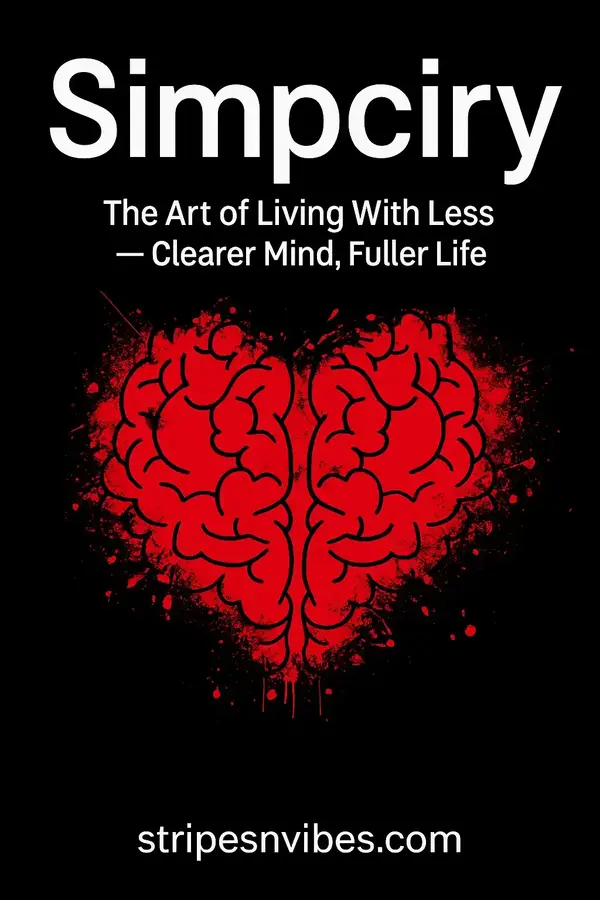In an age of constant noise, overflowing carts, and perpetual “more,” Simpciry arrives like a whispered invitation: simplify, but with purpose. More than a buzzword or a curated Instagram grid, Simpciry is a practical philosophy and toolkit for living intentionally — trimming the excess that steals attention and energy, while making space for what truly matters. This article breaks down Simpciry in human terms: what it means, why it works, how to start, and what to watch for.
What Is Simpciry — Not Minimalism, But Intentional Simplicity
At first glance Simpciry may look like minimalism’s cousin, and yes, they share DNA. But Simpciry emphasizes intentional simplicity rather than strict elimination. Minimalism often focuses on removing items; Simpciry asks a different question: Does this thing — schedule, habit, object, relationship — align with my values and purpose? If yes, keep and cherish it. If not, let it go. That subtle shift—from scarcity to clarity—turns decluttering into a deliberate act of life design.
Check Out Other related articles
- simpciry the art of living
- skinpres T the next skin care technology
- Sinkom Technology
- All you need to know about Goonierne 2
- Seekde Transforming search
The Core Principles of Simpciry
Simpciry rests on a few simple pillars that are easy to remember but take practice to live:
- Value Alignment: Make choices based on core values, not impulse or trends.
- Less Noise, More Signal: Reduce distractions so attention can land on meaningful work, people, or projects.
- Quality Over Quantity: Choose fewer things of higher utility, longevity, or emotional worth.
- Sustainability: Avoid wasteful consumption; favor reusable and repairable items.
- Presence: Cultivate mental space — practices like short meditations, single-tasking, and digital pauses.
These principles are pragmatic. They don’t require asceticism. Instead, they invite curiosity and discretion.
How to Practice Simpciry — A Step-by-Step Starter
You don’t need to overhaul your life overnight. Here’s a gentle roadmap:
- Audit Your Day: For three days, note where your time goes. Look for leak points — scrolling, unnecessary commutes, duplicate subscriptions.
- Purge Ruthlessly (But Kindly): Tackle one category—clothes, emails, notifications. Ask: “Have I used this in a year? Does it reflect who I want to be?”
- Cut One Noise Source: Turn off nonessential notifications. Unsubscribe from newsletters you never open.
- Choose One Value Project: Redirect time saved toward a project that matters—learning, a hobby, a relationship.
- Create Small Rituals: Morning movement, a 10-minute evening reset, a weekly planning session—rituals anchor simplicity into daily life.
Start small. Small changes compound.
Benefits You’ll Notice — Faster Than You Think
Simpciry produces both immediate and slow-blooming wins. Immediately, people report less stress, clearer focus, and a quieter mind. Practical benefits follow: fewer purchases, lower bills, more money saved, fewer decisions daily (decision fatigue reduces), and stronger relationships because attention is available to give. Over months, many find a kinder self-image and a durable sense of purpose. It’s not about deprivation; it’s about reallocating resources—time, money, energy—toward things that return more joy.
Common Misconceptions and Criticisms
Simpciry is sometimes misread as elitist or performative minimalism: “Look, I only have 50 things.” That misses the point. Simpciry is not about aesthetic purity or social signaling; it’s about coherence. Also, critics say it can be overwhelming for people juggling survival needs. That’s fair. The practice assumes a baseline capacity to choose; those under economic stress may need structural support before lifestyle design. Simpciry should be adaptable—tiny, affordable changes matter.
Is Simpciry Right for You?
Ask yourself: Do you feel scattered, overscheduled, or tired from “too much”? Do you want to reclaim time or reduce financial clutter? If yes, Simpciry can be practiced in modest doses and scaled. It’s ideal for people who value growth but dislike chaos and for those who want to streamline without losing warmth or personality. It’s not about becoming austere; it’s about becoming purposeful.
Practical Tools and Next Steps
Apps that track spending, minimalist wardrobe capsules, a single weekly planning session, automatic bill management—these practical tools support Simpciry. Books, short courses, and community groups can help, but the most potent tool is a simple notebook: jot values, list distractions, schedule one small change per week.
Final Thought — Simplicity as an Act of Care
Simpciry is less a rulebook and more an ethic: care for your attention, care for your resources, and care for your relationships. It asks you, gently and repeatedly, to choose. The payoff isn’t Instagram-worthy spaces or a long list of possessions gone; it’s days that feel fuller, not busier. When life is less cluttered, what you love grows room to breathe.
